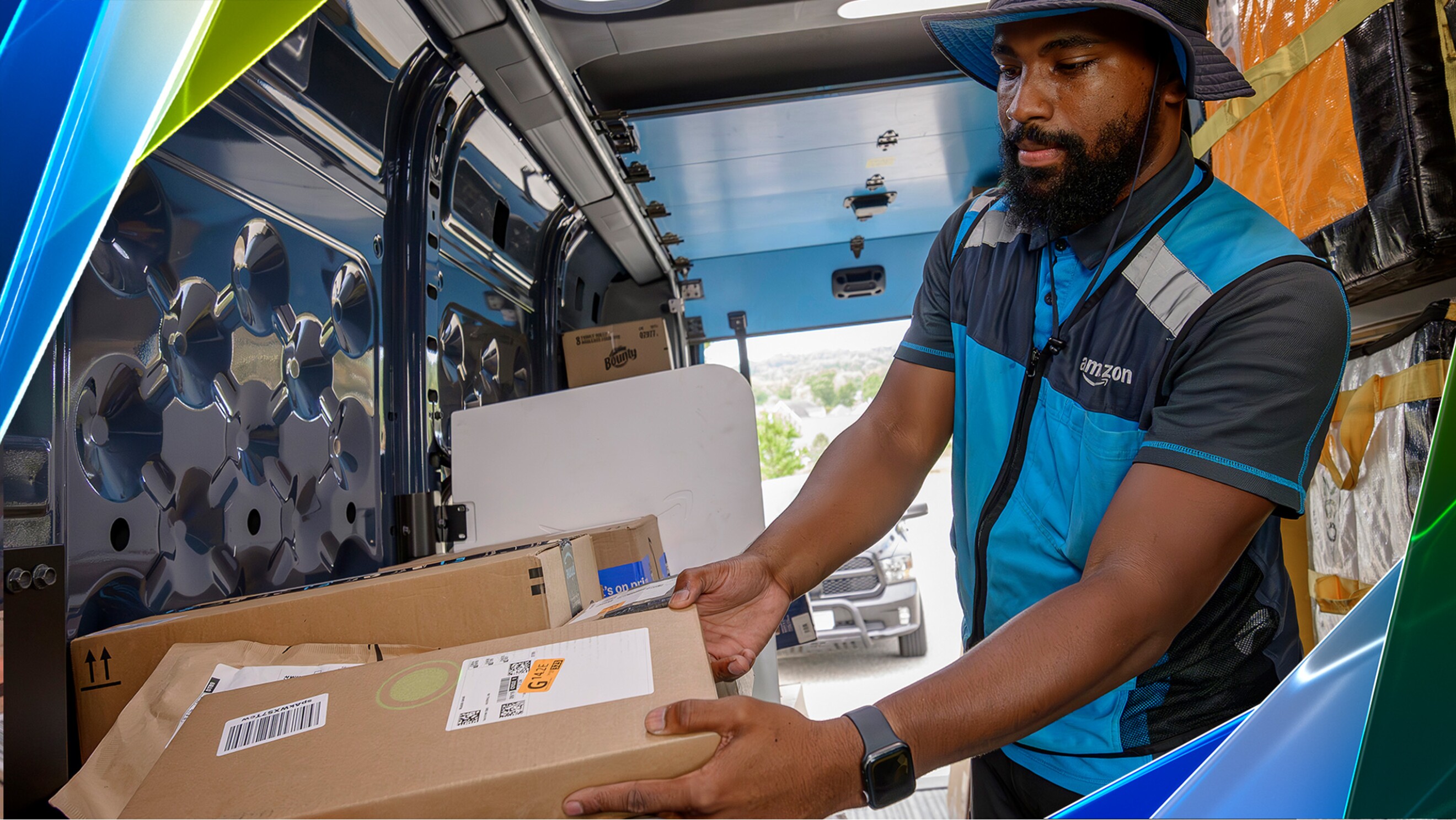Amazon is set to enhance its delivery operations significantly by deploying 1,000 electric delivery vans equipped with Vision-Assisted Package Retrieval (VAPR) technology by early 2025. This innovative AI-powered solution aims to streamline the package retrieval process for delivery drivers, ultimately improving efficiency and customer satisfaction.
The Challenge of Package Retrieval
For delivery drivers, locating packages in the back of a van might seem quick, taking only a few minutes at each stop. However, these minutes can accumulate when delivering to over a hundred customers daily, leading to significant delays. Traditional methods require drivers to manually sort packages, read labels, and verify customer details—tasks that can be time-consuming and mentally taxing.

Introducing VAPR
VAPR is designed to eliminate these inefficiencies. When a delivery van arrives at a location, the system automatically projects a green “O” on all packages designated for that stop and a red “X” on those that are not. This visual cue, combined with audio prompts, allows drivers to quickly identify the correct packages without manual sorting or labeling reading. John Colucci, product manager at Amazon Transportation, emphasized the importance of addressing unique delivery challenges such as lighting and space constraints within vans. The idea for VAPR originated in early 2020 when a dedicated team envisioned leveraging technology to assist drivers seamlessly.
How VAPR Works
VAPR utilizes Amazon Robotics Identification (AR-ID) technology, initially developed for fulfillment centers. This advanced computer vision system automatically identifies items during inventory operations without requiring manual barcode scanning. By processing its surroundings in real time, VAPR can recognize multiple barcodes simultaneously under varying lighting conditions. The technology is optimized for the confined environment of delivery vans and integrates with the vehicle’s navigation system. Early tests have shown that VAPR reduces package retrieval time from 2-5 minutes to just about 1 minute, significantly enhancing driver efficiency.
Benefits of VAPR
The implementation of VAPR is expected to yield several key benefits:
· Time Savings: Early tests indicate that VAPR can save drivers over 30 minutes per route, allowing them to focus more on customer service.
· Reduced Effort: Drivers report a 67% reduction in perceived physical and mental effort when using VAPR.
· Increased Accuracy: With automated package identification, the likelihood of errors in deliveries decreases significantly.
Bobby Garcia, a driver testing the system in North Boston, remarked on its impact: “It’s made my life so much easier.”

A Sustainable Future
The electric vans equipped with VAPR are manufactured by Rivian, aligning with Amazon's commitment to sustainability. This partnership not only supports Amazon's goal of reducing its carbon footprint but also enhances the overall efficiency of its logistics operations. With over 390,000 Delivery Service Partner (DSP) drivers worldwide and more than 100,000 vans in Amazon's fleet delivering millions of packages daily, the potential for time savings and improved delivery accuracy at scale is immense.
Conclusion
As Amazon prepares to roll out this groundbreaking technology in its delivery network, Vision-Assisted Package Retrieval represents a significant leap forward in last-mile logistics. By integrating advanced AI solutions into everyday operations, Amazon is not only enhancing the driver experience but also setting new standards for efficiency and customer satisfaction in package delivery. The future of logistics is bright with innovations like VAPR leading the way!
-
Corporate News2025-01-23Application Case | Height Guidance for Blind Hole Dispensing on Smartphone Screens with SinceVision SG Series Laser Displacement Sensor
-
Corporate News2025-01-23SinceVision to Showcase Cutting-Edge High-Speed Cameras at Asia Photonics Expo (APE) 2025
-
Corporate News2025-01-22The Ultimate Guide to Smart Series High-Speed Cameras for Industrial and Scientific Applications
-
Industry News2025-01-13From Smart Homes to LiDAR: The Most Advanced Sensors at CES 2025







